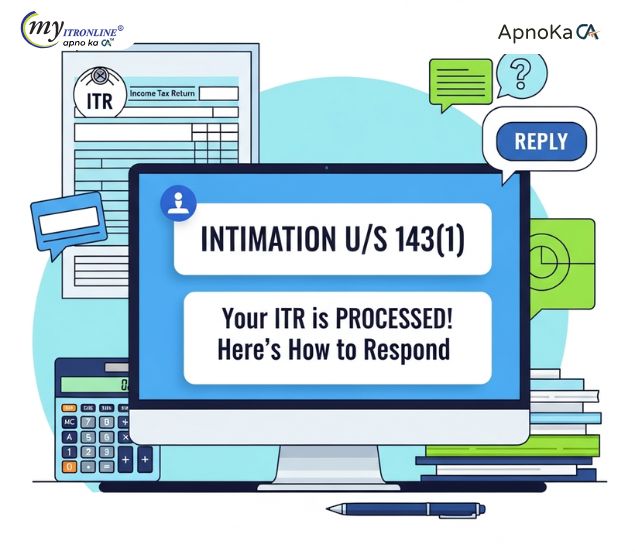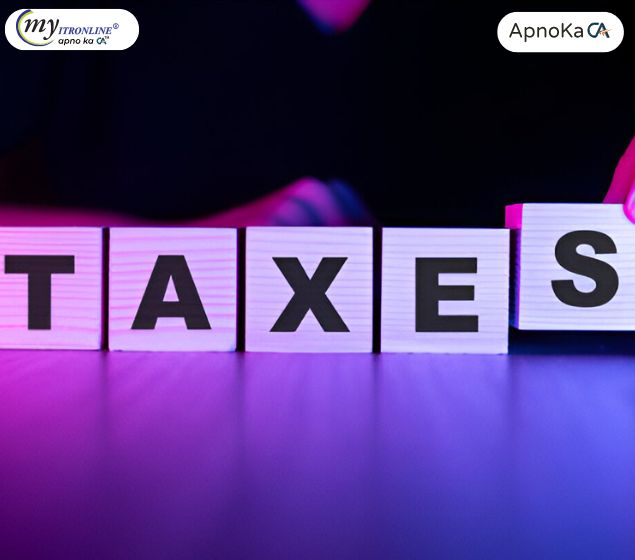# section143
11 posts in `section143` tag

Intimation U/S 143(1): Your ITR is Processed Here's How to Respond
The Intimation under Section 143(1) is a routine message from the Income Tax Department after processing your ITR. It may confirm your return, show a refund, or raise a tax demand. This blog explains how to read the notice, respond correctly, and avoid penalties.
.jpg)
Income Tax Notice under Section 143(2): Meaning, Scrutiny Process, Deadlines & Response Guide
Have you received a notice under Section 143(2)? Don’t panic. This blog explains what it means, why it’s issued, the deadlines to track, and how to respond effectively ensuring you're well-prepared for any scrutiny with confidence.

ITR Scrutiny Notice u/s 143(2) for AY 2024-25: Don't Panic! Your Step-by-Step Guide to Responding
The Income Tax Department has begun dispatching scrutiny notices under Section 143(2) for AY 2024-25. This blog provides a detailed guide on understanding these notices, common reasons for their issuance, a step-by-step response strategy, and essential tips to prevent future scrutiny, ensuring taxpayers can navigate the process effectively.

our Guide to the Income Tax Intimation Password (Section 143(1))
This guide explains the purpose of an Income Tax Intimation notice received under Section 143(1) after filing your ITR. It details why the document is password-protected and provides the precise password format: your PAN number in lowercase followed immediately by your Date of Birth in DDMMYYYY format. Learn the step-by-step process to open the encrypted PDF, understand the calculation comparison within, and know what actions to take based on whether it shows a refund, demand, or no change.
.jpg)
143(1) Intimation Order – A Step-by-Step Guide for Taxpayers
An in-depth manual on Section 143(1) Intimation Orders, discussing the various types, adjustments, response methods, legal implications, and frequently asked questions to assist taxpayers in addressing discrepancies effectively.
.jpg)
Intimation Notice Under Section 143(1): What It Means and How to Respond
This blog offers a detailed overview of the Intimation Notice as per Section 143(1) of the Income Tax Act. It outlines the various types of notices, what they include, their significance, and the actions to take when you receive one. Follow this thorough guide to ensure compliance and address any discrepancies.

Understanding Scrutiny Assessment under Income Tax Section 143(3) - A Comprehensive Guide
This blog post provides a comprehensive guide to Scrutiny Assessment under Income Tax Section 143(3), including its purpose, time limit, notice, and hearing process. It helps taxpayers understand the importance of complying with the income tax laws and avoiding penalties.

Understanding the Section 143(2) Notice Time Limit: An Overview for Taxpayers
The time limit for issue of notice under Section 143(2) of the Income-tax Act, 1961, is six months from the end of the financial year in which the return of income is filed. This time limit can be extended by the Commissioner of Income-tax or the Chief Commissioner of Income-tax, as the case may be, for a period not exceeding six months. Taxpayers must comply with the notice issued by the AO within the prescribed period to avoid adverse consequences.

Explaining Income Tax Notice Section 143(2): A Detailed Guide to Section 143(3) Scrutiny
This blog post provides an in-depth explanation of the income tax notice under Section 143(2) and the scrutiny process under Section 143(3). It covers the types of notices, consequences of ignoring, and time limits for issuing notices and final assessment orders, helping taxpayers navigate the complexities of the income tax laws.

Notice Under Income Tax Act Section 143(1)(a): All the Information You Need
Receiving a notice under Section 143(1)(a) of the Income Tax Act can be daunting. This comprehensive guide explains why such notices are issued, the types of adjustments they may include, and the detailed steps to respond effectively. By understanding these aspects and maintaining accurate records, you can ensure compliance and avoid further complications with your income tax return.

Understanding the New Scrutiny Guidelines for ITRs (FY 2024-25)
The new scrutiny guidelines for ITRs (FY 2024-25) provide transparency in the tax department's functioning and bring in a data-driven approach for identifying cases for scrutiny assessment. This blog post demystifies the new scrutiny guidelines for ITRs (FY 2024-25) and provides a comprehensive guide for taxpayers to ensure that they are compliant with the tax laws and avoid any potential scrutiny.
